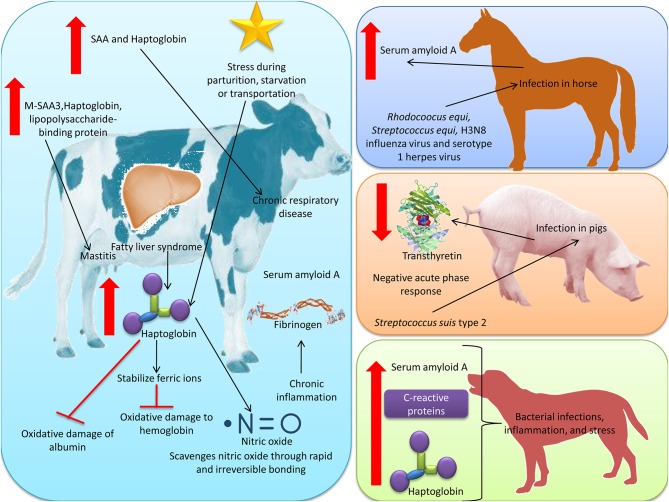Figure 3.
Acute phase proteins as stress biomarkers. Increased level of haptoglobin was noticed in cattle in conditions like fatty liver syndrome and stress induced by parturition, starvation, or transportation. There was also increase in SAA and fibrinogen in cattle during chronic inflammation and associated stress. Haptoglobin exerts its anti-oxidant role by stabilizing ferric irons to prevent oxidative damage to hemoglobin. Haptoglobin protects albumin from oxidative damage by inhibiting the exchange of heme between hemoglobin and albumin. Haptoglobin scavenges nitric oxide through rapid and irreversible bonding, thereby limiting its bioavailability and preventing oxidative damage from reactive nitrogen species. Haptoglobin and SAA are synthesized in the bovine mammary epithelium, and the substantial increase in their secretion into milk was observed during mastitis. SAA has been found to increase in sera of foals during infections with bacteria, i.e., Rhodocoocus equi and Streptococcus equi and viruses, i.e., H3N8 influenza virus and serotype 1 herpes virus. Streptococcus suis type 2 infection in pigs, transthyretin showed a negative acute phase response. CRP is the primary APP in canines, along with haptoglobin and SAA, whose concentrations are elevated in bacterial infections, inflammation, and stress.

